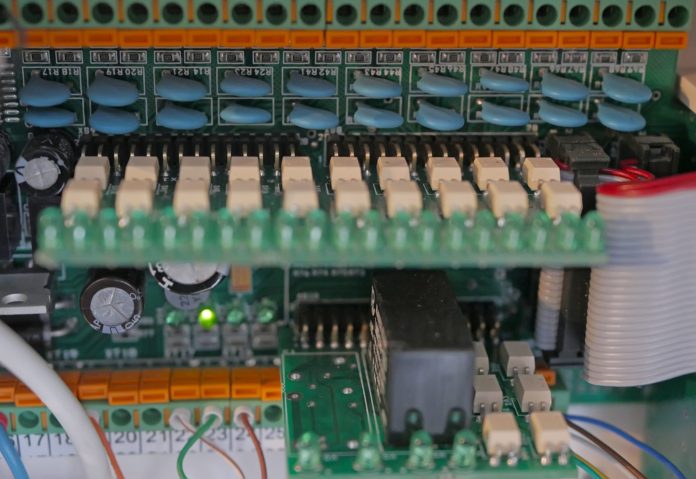The internet of things (IoT) is creating enormous innovation opportunities for mobile operators, vendors, and enterprises. But it comes with commercial and technological challenges. From years of testing and launch experience, here’s what we’ve learned about how best to get your latest device from workshop to storefront.
Over the past few years, there’s been a lot of buzz around the Internet of Things, with Gartner predicting there will be more than 20 billion connected things by 2020, and more than 60 percent of those will be in the consumer space [1].
This wave of niche and varied IoT products launching in the market every day has created a chaotic environment for operators. That’s why most of them are playing the “wait and see” game while continuing to provide connectivity.
At Brightstar, as we handle devices and mobile accessories for retailers, operators, and enterprises, we ensure the products we distribute and sell do in fact work as advertised. Nothing destroys customer confidence and brand value faster than new gadgets that don’t play well with networks and other smart devices. Based on this experience, one of the key areas we want to emphasize is the certification processes and their role in bringing quality products to market in a cost-efficient and timely manner.
Product certification entails validating the features and functionalities of a product (and as part of a complete solution) on an operator’s network in a lab and production setting. It can be costly and take up a lot of time. We’ve seen many niche IoT product manufacturers fail to get beyond the prototype or market-ready phase because of it.
Don’t let the world miss out on your product. Follow these four steps to get your high-quality products certified and into the market as soon as possible.
Add a pinch of agility: Develop hardware in the same way you develop software
Software engineers have taken to agile methodologies because they allow for the incorporation of shifting customer requirements during the development process while maintaining a continuous feedback loop between all the stakeholders. Why not apply this concept to hardware development and certification of hardware products? A lot of literature proposes agile principles in hardware development [2] [3], but there’s been little discussion about marrying agility and product certification. More specifically, why can we not have a continuous feedback loop between the R&D teams and certification engineers in the certification program? This would provide options to the operators and vendors, allowing them to change requirements mid-way in the certification program while maintaining product quality and minimizing impact to launch timelines.
Leverage automation: A collective proposition
Imagine executing thousands of tests manually on an IoT product not once, but multiple times, as the R&D team sends new software loads. In this case, even the most efficient, agile certification process will not help overcome the bottleneck of manual testing from a time-to-market and cost perspective. This, coupled with typical challenges that come with testing IoT devices, can make the certification process look daunting, especially for niche IoT devices. Existing test automation tools in the market are riddled with challenges, from scalability to cost and protocol support. So, find a collection of app, security or RF testing tools that allows you to automate IoT certification while collectively addressing the key challenges above.
Don’t skip pilot and solution testing
One of the wider known issues with IoT is fragmentation on multiple levels: product, protocol, and data. An IoT device may function as per the specs, but it may not “play well with others” IoT devices required to complete a solution for end users. For example, your Nest thermostat will work just fine by itself, but does it work seamlessly with your light bulbs, smart blinds, or room temperature/humidity sensors to allow you to truly realize the benefits of home automation? Pilot and solution testing can ensure your product will provide desired performances in real-life situations. Solution testing entails validating interoperability of heterogenous IoT products required to complete a solution for customers, while pilot testing ensures IoT products are being validated in real-life situations by leveraging pre-launch test groups.
Use a distributed test framework for complete solution validation
When you’re validating an IoT device as part of a complete solution a critical hurdle is procuring the other niche IoT devices involved in the scenario. One option is to find remote access to IoT devices. This approach is quite prevalent in the mobile app certification world, with organizations such as Amazon [4], Google [5], and other prominent companies making device test farms available. However, this isn’t as widespread in the IoT space due to the underlying product fragmentation and interoperability obstacles. Another challenge is finding other IoT devices in the field so you can insert real-life data into the test cycles. A crowd-sourced approach can help here, but data and device security are paramount for this tactic to work. The proposed cloud-based distributed test framework would entail remote access to crowd-sourced IoT devices securely, allowing IoT device vendors to validate their devices with other heterogenous IoT devices in the field, thus emulating real-life test scenarios.
References
[1] https://www.gartner.com/newsroom/id/3598917
[2] https://www.backblaze.com/blog/wp-content/uploads/2015/08/Scrum-for-Hardware-Development-V3.pdf
[3] http://www.auxilium-inc.com/Agile-for-Hardware-Development-and-Cross-Discipline-Teams.pdf

